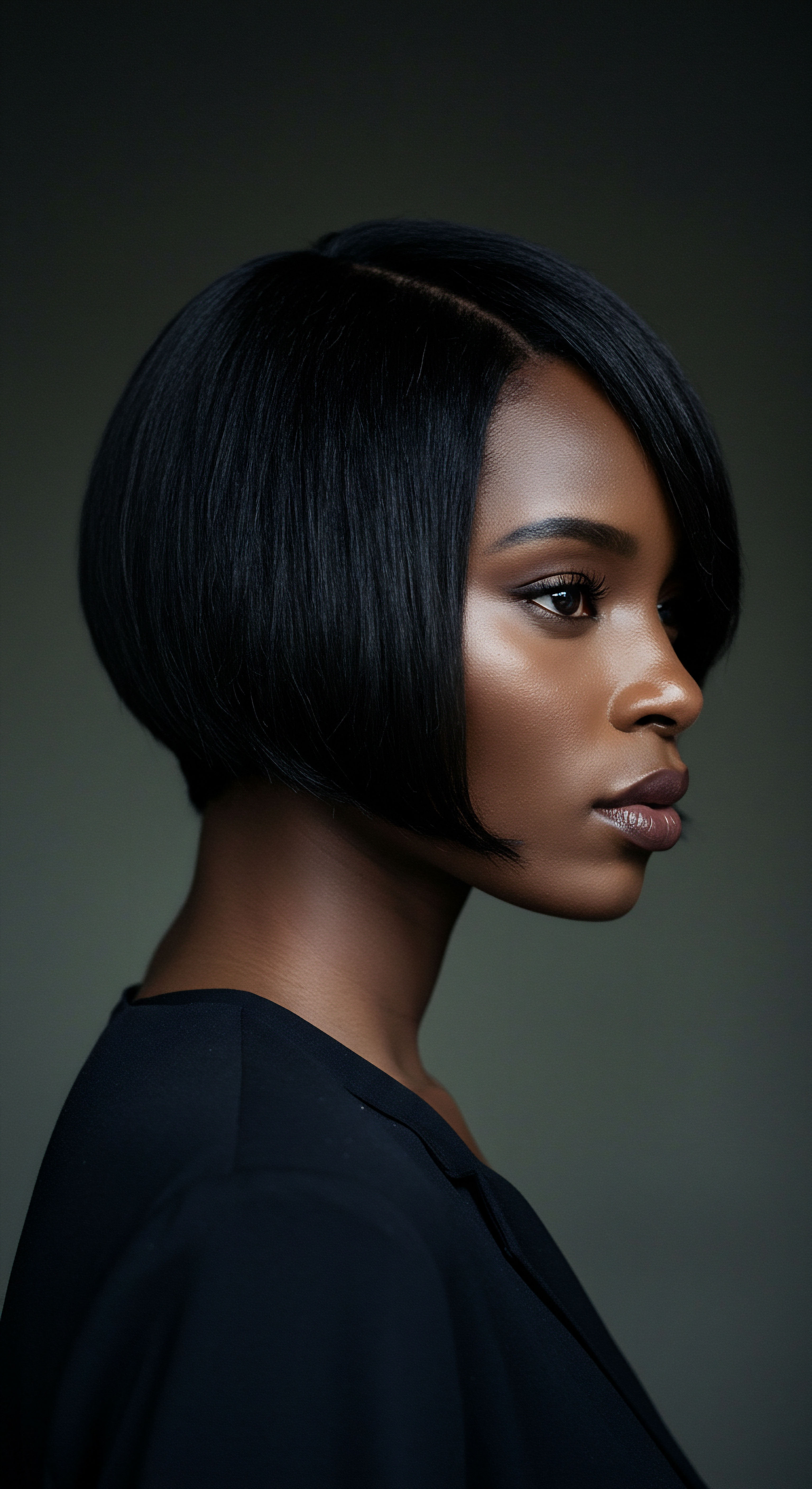
Roots
Consider for a moment the subtle sheen on a healthy strand, the way it catches the light, or the gentle glide of fingers through well-cared-for coils. This everyday wonder, often taken for granted, finds its fundamental explanation within the outermost layer of each individual hair shaft ❉ the cuticle. It stands as the hair’s silent sentinel, a microscopic marvel of nature’s engineering, tasked with safeguarding the precious inner core. To truly appreciate the vibrant life and resilience of textured hair, we must first understand this delicate, yet profoundly powerful, shield.
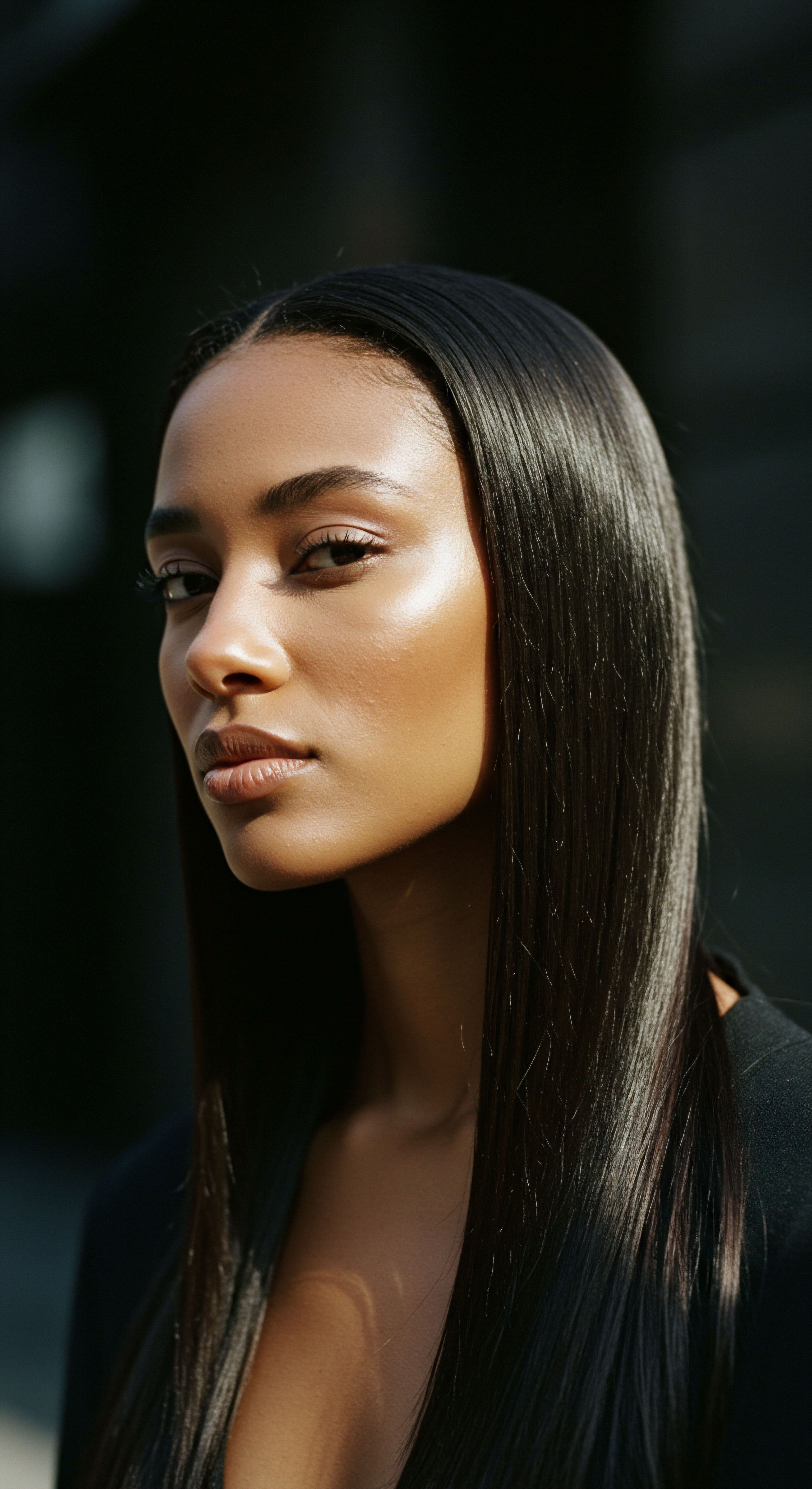
Hair’s Outer Shield
The hair shaft, that visible part extending beyond the scalp, is a complex biological structure. At its heart lies the Medulla, a soft, sometimes absent, central core. Surrounding this is the Cortex, which accounts for the majority of the hair’s mass, holding the pigment that gives hair its color and the protein structures that determine its strength and elasticity. Cloaking these inner components is the cuticle, a translucent layer composed of dead, flattened cells.
These cells are arranged in an overlapping pattern, much like shingles on a roof or scales on a fish, pointing towards the hair’s tip. This unique arrangement is not merely for aesthetics; it forms a formidable barrier.
Each cuticle cell measures approximately 0.5 micrometers in thickness and about 45-60 micrometers in length, with multiple layers, typically five to ten, creating this protective sheath. This layering provides robust defense against external stressors. Beyond the cellular structure, the cuticle’s surface is further adorned with a specialized lipid coating, sometimes referred to as the F-Layer. This lipid barrier, composed of fatty acids, ceramides, and cholesterol, plays a critical part in the cuticle’s function, regulating the hair’s interaction with its environment and maintaining its integrity.

The Cuticle’s Primary Duties
The principal assignment of the hair cuticle is protection. It serves as the hair’s first line of defense, guarding the sensitive cortex from a relentless assault of environmental factors, chemical treatments, and mechanical forces. Without an intact cuticle, the hair’s inner protein structures would be vulnerable to degradation, leading to weakness and breakage.
The hair cuticle, a microscopic layer of overlapping cells, acts as the primary shield for the hair’s inner core.
Another vital function of the cuticle is its role in moisture regulation. The tightly sealed scales of a healthy cuticle help to retain the hair’s natural hydration, preventing excessive water loss from the cortex. This barrier function is essential for maintaining hair’s suppleness, elasticity, and overall health. When the cuticle is compromised, its ability to hold moisture diminishes, leading to dryness and brittleness.
The cuticle also significantly influences the hair’s appearance and tactile qualities. The smooth, flat surface of a well-maintained cuticle reflects light evenly, imparting a healthy sheen and luster. Conversely, a roughened or lifted cuticle scatters light, resulting in a dull appearance and a rough, frizzy feel. The way hair responds to touch, its softness or coarseness, is intimately tied to the condition of this outer layer.
- Protection ❉ Shields the cortex from environmental aggressors, chemical processes, and physical manipulation.
- Moisture Retention ❉ Seals in hydration, preventing water loss and maintaining internal moisture balance.
- Aesthetic Appeal ❉ Contributes to the hair’s natural shine, smoothness, and soft feel.
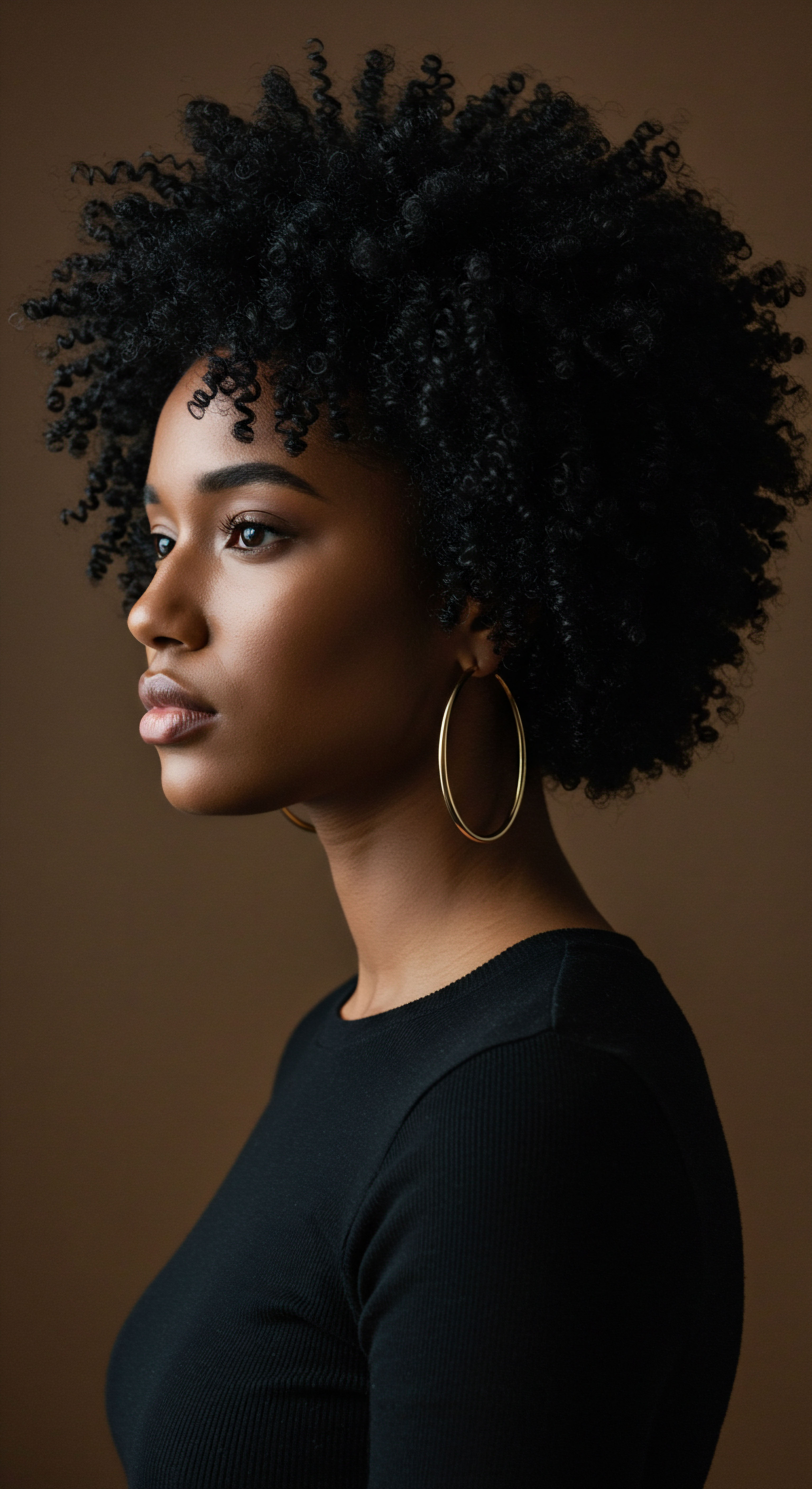
Ritual
As we move from the foundational understanding of the cuticle to its lived experience, we encounter the rhythms of daily care, the thoughtful application of products, and the practices that either nurture or challenge our hair’s protective layer. Our hands, our tools, the very air around us, all participate in a silent conversation with the cuticle. Understanding this interaction allows us to approach our hair rituals not as mere routines, but as deliberate acts of care, designed to preserve the integrity of this vital outer shield. It is in these moments of engagement that we truly influence the cuticle’s well-being.

How Daily Practices Affect the Cuticle
The cuticle, while robust in its design, is susceptible to wear and tear from everyday activities. Mechanical forces, such as vigorous brushing, tight styling, or even the friction of clothing, can cause the delicate scales to lift, chip, or break away. This damage compromises the cuticle’s ability to lie flat, leading to increased friction between strands and a heightened propensity for tangling and breakage. The audible snap of a hair strand often signals a breach in this protective barrier.
Chemical treatments represent another significant challenge to cuticle integrity. Processes like coloring, bleaching, or relaxing are designed to alter the hair’s internal structure, and they do so by intentionally opening the cuticle scales to allow chemicals to reach the cortex. While necessary for the desired transformation, these processes, especially when not performed with care, can leave the cuticle vulnerable, making it more porous and less effective at retaining moisture. Repeated chemical treatments without adequate post-care can result in a permanently compromised cuticle.
Heat styling, a common practice for many, also poses a direct threat to the cuticle. High temperatures from flat irons, curling wands, or even powerful blow dryers can cause the water within the hair shaft to rapidly expand, leading to a phenomenon known as “bubble hair” or cuticle damage. This intense heat can lift and crack the cuticle scales, exposing the cortex and contributing to dryness and brittleness. The tell-tale signs of heat damage—a rough texture, lack of shine, and increased breakage—are often direct indicators of a compromised cuticle.

Nourishing the Cuticle Through Care
Fortunately, our hair care rituals can be powerful allies in supporting cuticle health. Gentle detangling is a cornerstone of cuticle preservation. Beginning with the ends and working upwards, using a wide-tooth comb or fingers, minimizes the strain on the hair shaft and prevents unnecessary lifting or tearing of the scales. The application of a slip-inducing conditioner further aids this process, creating a smoother path for the comb and reducing friction.
Conscious hair care practices, from gentle detangling to mindful product selection, are vital for preserving the cuticle’s protective role.
Conditioning is perhaps the most direct way to support the cuticle. Conditioners, particularly those rich in lipids and humectants, work to smooth down lifted cuticle scales, temporarily sealing them and restoring a smoother surface. This action not only enhances shine but also improves the hair’s ability to retain moisture and reduces friction. Lipids, whether naturally occurring on the hair surface or applied through products, play a significant part in this process, forming a film that prevents moisture loss and contributes to the hair’s hydrophobicity.
For textured hair, the choice of products and application techniques takes on a particular significance. The unique structure of curls and coils means that natural oils from the scalp do not easily travel down the hair shaft, leaving the cuticle along the lengths and ends more exposed and prone to dryness. This uneven distribution means that targeted application of moisturizing and sealing products becomes even more critical.
- Conditioning ❉ Smoothes and seals cuticle scales, improving light reflection and moisture retention.
- Gentle Detangling ❉ Minimizes mechanical stress, preventing lifting and chipping of cuticle cells.
- Moisture Sealing ❉ Products with lipids and oils help reinforce the cuticle’s barrier, particularly important for hair types where natural sebum distribution is limited.

Why Does Frizz Appear?
The phenomenon of frizz, a common concern for many, especially those with textured hair, is deeply connected to the cuticle’s interaction with humidity. When the air carries a high moisture content, the hair shaft, particularly if its cuticle is lifted or damaged, will readily absorb this external water. The endocuticle, one of the finer layers within the cuticle, is particularly prone to absorbing water from the atmosphere, causing the hair strands to swell.
This swelling, uneven across the hair shaft due to varying levels of cuticle integrity and the natural curvature of textured strands, disrupts the smooth alignment of the cuticle scales. As the scales lift and become uneven, light scatters rather than reflects, resulting in the characteristic dull, unkempt appearance of frizz. Products designed to combat frizz often work by either smoothing the cuticle surface or by creating a barrier that reduces the hair’s absorption of atmospheric moisture, thus helping the cuticle maintain its flat, orderly arrangement.
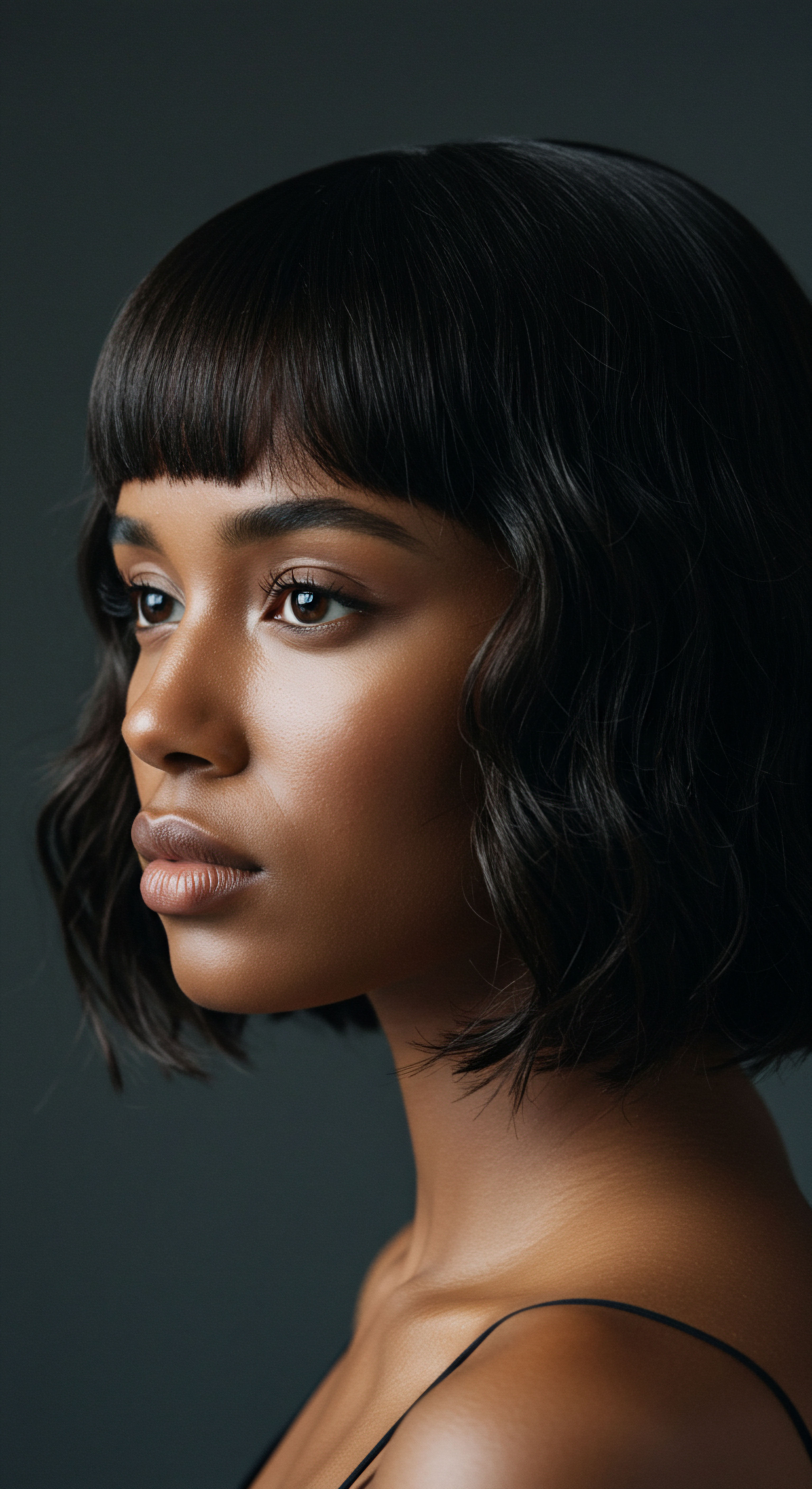
Relay
To truly appreciate the hair cuticle’s profound influence, we must look beyond its immediate protective role and consider its complex interplay with hair’s inherent structure, particularly across diverse hair types. How does the cuticle’s subtle architecture contribute to the unique qualities and challenges of textured hair? This deeper inquiry reveals a fascinating story where biological design, environmental factors, and historical care practices converge, offering a more complete understanding of hair’s delicate balance.

The Cuticle’s Role in Hair Type Characteristics
The cuticle, though microscopically thin, holds clues to the distinct characteristics of different hair types. For instance, Asian hair often presents with a round cross-section and is known for its straightness and strength. Studies have shown that Asian hair typically possesses a greater number of cuticle layers and a thicker overall cuticle, with more compact cells, contributing to its robust mechanical properties. The cuticular inclination, or the angle at which the scales lie, is also steeper in Asian hair, creating a very smooth, tightly sealed surface.
In contrast, Afro-textured hair, characterized by its elliptical cross-section and high curvature, presents a different cuticle story. While not intrinsically weaker in its protein composition compared to other hair types, its unique helical shape creates areas of vulnerability. The cuticle scales on highly curved strands are often more lifted, less tightly packed, and more prone to separation and damage, especially at the points of curvature. This structural difference means that Afro-textured hair, despite its inherent qualities, is more susceptible to physical trauma from styling and environmental exposure, leading to increased breakage.

Does Higher Lipid Content Mean Less Dryness?
Here, a common assumption meets a compelling scientific observation. It might seem logical that hair with more lipids would be less prone to dryness. However, research reveals a surprising reality for Afro-textured hair. Studies have indicated that Afro-textured hair actually possesses the highest overall lipid content among ethnic hair types, with quantities estimated to be 2.5 to 3.2 times higher than European and Asian hair, and 1.7 times higher in internal lipids.
Despite this abundance of lipids, Afro-textured hair is frequently characterized as dry or very dry. This apparent paradox is not a contradiction but a testament to the complex interplay of factors beyond simple lipid quantity. The unique curvature and spiral shape of Afro-textured hair follicles and shafts create an uneven distribution of natural sebum along the strand, leaving sections of the hair more exposed and prone to moisture loss. The lipids present in the cuticle of Afro-textured hair also exhibit a lower order bilayer compared to other hair types, which can affect its barrier function and permeability.
This distinct biomechanical characteristic, where high curvature creates points of weakness and increases susceptibility to mechanical extension, makes the hair more fragile and susceptible to breakage. The increased permeability of Afro-textured hair means it can absorb water more readily but also lose it faster, contributing to the perception of dryness even with high lipid levels. Therefore, addressing dryness in textured hair extends beyond simply adding lipids; it requires understanding the specific structural nuances of its cuticle and managing moisture dynamics.
| Characteristic Cuticle Layers |
| Asian Hair More layers, thicker overall |
| Caucasian Hair Varying layers, often less compact |
| Afro-Textured Hair Fewer layers, often more lifted |
| Characteristic Mechanical Strength |
| Asian Hair Highest mechanical strength |
| Caucasian Hair Varying resistance |
| Afro-Textured Hair More vulnerable to breakage from physical trauma |
| Characteristic Lipid Content |
| Asian Hair Lower surface lipids, internal lipids are main |
| Caucasian Hair Higher levels of polar lipids |
| Afro-Textured Hair Highest overall lipid content, often sebaceous lipids |
| Characteristic Permeability |
| Asian Hair More resistant to hydration changes |
| Caucasian Hair Higher water absorption, slow diffusion |
| Afro-Textured Hair Increased permeability, absorbs and loses water readily |
| Characteristic These differences highlight the unique care requirements for each hair type. |

The Cell Membrane Complex and Cuticle Cohesion
Beyond the overlapping scales, the cuticle’s cohesion is further maintained by the Cell Membrane Complex (CMC). This intercellular “glue” is a lipid-rich structure that binds the cuticle cells together and also connects the cuticle to the underlying cortex. The integrity of the CMC is paramount for the hair’s overall structural soundness. When the CMC is damaged, the cuticle scales can separate more easily, leading to increased porosity and a compromised barrier.
Chemical processes, such as perming or relaxing, can significantly impact the CMC, weakening the bonds that hold the hair together and making it more prone to splitting and breakage. Environmental stressors, like prolonged UV exposure, also contribute to the degradation of the CMC and the cuticle lipids, further diminishing the hair’s protective capabilities. Understanding the vulnerability of this complex structure underscores the importance of protective measures and reparative treatments in maintaining hair health, particularly for textured hair, where these inherent structural differences may predispose it to greater CMC damage.
The cuticle’s structural nuances, including its lipid content and cell membrane complex, vary across hair types, profoundly influencing their unique responses to care and environmental factors.
The insights gained from examining the cuticle at this level of detail reinforce the idea that hair care is not a one-size-fits-all endeavor. What serves one hair type might not fully address the distinct needs of another. For textured hair, this means acknowledging its inherent lipid richness while simultaneously addressing its unique structural predispositions to dryness and fragility, guiding us towards more thoughtful and effective care practices.

Reflection
Our exploration of the hair cuticle reveals it to be far more than a simple outer layer; it is a dynamic, living testament to the marvel of biological design. From its foundational role as a protective shield to its subtle influence on the unique character of textured hair, the cuticle consistently guides our understanding of hair health and resilience. It reminds us that true care extends beyond surface-level treatments, inviting a deeper connection with the inherent qualities of our strands. By honoring the cuticle’s delicate yet powerful presence, we step into a more harmonious relationship with our hair, fostering its vitality and celebrating its natural beauty.
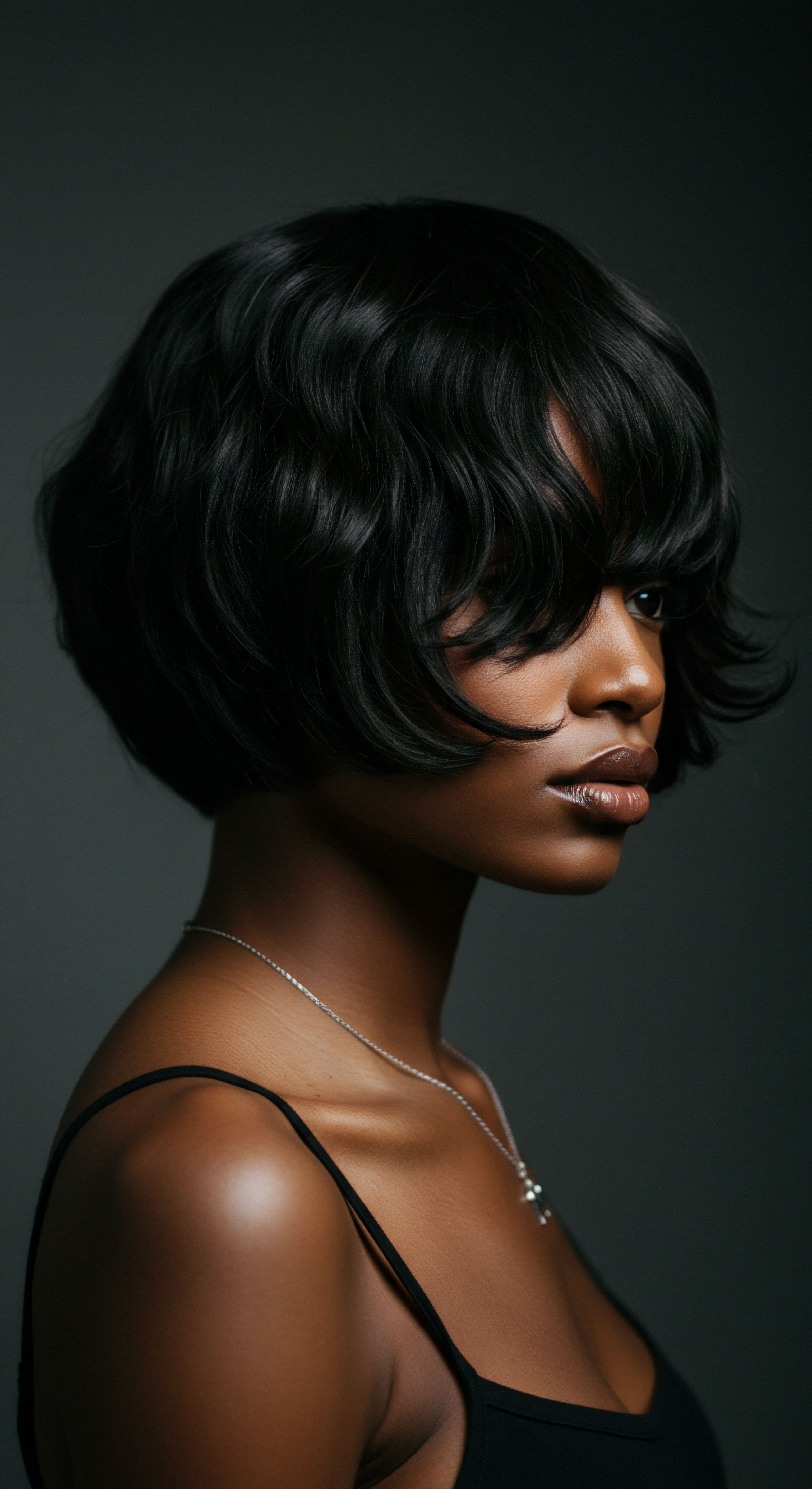
References
- Abiola, O. et al. (2024). The Genomic Variation in Textured Hair ❉ Implications in Developing a Holistic Hair Care Routine. MDPI.
- Dawber, R. P. R. & Messenger, A. G. (2024). Apparent fragility of African hair is unrelated to the cystine-rich protein distribution ❉ A cytochemical electron microscopic study. ResearchGate.
- Spreading Clean Beauty. Lipid layer ❉ what it is, its function and how to take care of it.
- Robbins, C. (2020). Defying Damage ❉ Understanding Breakage in Afro-textured Hair. Cosmetics & Toiletries.
- Leerunyakul, K. & Suchonwanit, P. (2024). Hair cuticle differences between Asian and Caucasian females. ResearchGate.
- Dawber, R. P. R. & Messenger, A. G. (2003). Apparent fragility of African hair is unrelated to the cystine-rich protein distribution ❉ a cytochemical electron microscopic study. PubMed.
- The Belgravia Centre. Hair Types and Race Differences.
- Silkbiotic. THE HAIR ❉ Structure and Ethnic Specificities.
- Leerunyakul, K. & Suchonwanit, P. (2020). Asian Hair ❉ A Review of Structures, Properties, and Distinctive Disorders. PMC.
- Lion Corporation. A Scientific Approach to Studying the Properties of Hair.
- The Solid Bar Company. Essential Guide To Curly & Afro-Textured Hair.
- BRAZIL-PROF. Lipids in hair cosmetics ❉ role, benefits and selection features.
- Al-Nuaimi, M. et al. (2023). Hair Lipid Structure ❉ Effect of Surfactants. MDPI.
- Oliver, M. A. et al. (2019). Ethnic hair ❉ Thermoanalytical and spectroscopic differences. Digital CSIC.
- Khumalo, N. P. & Gumedze, F. (2015). Hair Breakage in Patients of African Descent ❉ Role of Dermoscopy. PMC – PubMed Central.
- Leerunyakul, K. & Suchonwanit, P. (2024). Asian Hair ❉ A Review of Structures, Properties, and Distinctive Disorders. ResearchGate.
- Al-Nuaimi, M. et al. (2022). Morphological properties of hair and their variation when subjected to oxidation via chemical bleaching.
- Abiola, O. et al. (2023). Grades of cuticle layer damage assessed by TEM. ResearchGate.
- Hexis Lab. Genomic Variation in Textured Hair ❉ Implications for Holistic Hair Care.
- Oliver, M. A. et al. (2024). Ethnic hair ❉ Thermoanalytical and spectroscopic differences. ResearchGate.